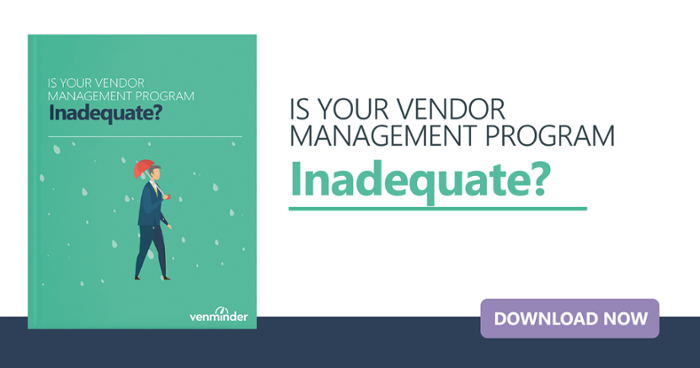Due to the nature of business, all vendor relationships eventually come to an end. Sometimes, the relationship’s end is simply due to no longer needing the product or service. However, sometimes it’s not as easy as that. It’s important to know the signs that may warrant a sudden vendor break up.
6 Signs of a Poor Vendor Relationship
Here are six signs the vendor relationship no longer meets your needs and it may be time to break up:
1. The vendor is no longer meeting your contractually obligated service level agreement.
Service level declines usually have a domino effect on your organization and customers. And, it’s not positive as the decline in service levels can cause a lot of angst. The factors that seem to lead to a decline in service levels often include:
- Major changes in executive leadership
- Financial struggles – review the vendor’s 10-K or financial statement as it shares more insight than just the numbers such as pending litigation!
- Employee layoffs
2. Transaction risk is high or increasing.
Are you noticing that the delivery of your product or service is inconsistent or even non-existent at times? This is considered transaction risk and it’s a big deal. Check out the FDIC’s regulatory guidance, FIL 44-2008, to learn why and about more risk types to be on the lookout for. If the vendor is creating these risks and you can’t resolve them, then it may be time to break up.
3. There’s a lack of communication or they’re discontinuing a key product or service.
If the vendor isn’t responsive or takes an excessively long time to return emails or phone calls, then that’s usually an indication of a problem. Strong communication is key to a healthy vendor relationship.
4. You were misled during the sales demonstration.
So, you’ve watched the sales demo and have decided this is the product or service for you. Now, you’re realizing after signing the contract that in order to have all the fancy features you really liked and thought you were getting, you need to purchase more. If you were misled upfront and it’s now making it difficult for you to complete daily tasks, then it may be time to break up.
5. The vendor is falling behind.
The vendor isn’t keeping pace with their competitors in the market space. For a vendor relationship to evolve, typically some innovation must happen to keep up with the industry changes and meet regulatory expectations.
6. Frequent price increases are the norm.
Is the vendor constantly increasing prices on the products or services you use? Some price increases are expected. They do happen. However, if it’s constant, unexpected or announced with little lead time, that can cause an issue.
If you’re finding yourself in one of these scenarios it can be a scary time. Especially if you’re not sure the next steps to take. The first step we always recommend is you speak to the vendor and try to resolve the issues. If you can’t come to a mutual understanding, then it may be time to begin termination.
Per OCC Bulletin 2013-29, termination is the last phase of the vendor lifecycle. Termination doesn’t simply mean that you halt all use of the third party’s product or service and you’re done with the relationship. Further action must be taken.
3 Questions to Ask Yourself Before Terminating the Vendor Relationship
- Will we bring the function back in house or replace the product or service with another third party?
- How will the vendor return or destroy our data assets?
- What steps must be taken to notify the vendor of termination per our contract’s non-renewal/termination clause?
Hopefully you don’t find yourself in a situation that warrants a sudden break up with a third party, but if you do, know that it’s actually a pretty common occurrence for organizations to replace vendors. Be sure to remember that there are steps that need taken to properly terminate the vendor relationship and keep your board and senior leadership team involved in all decisions.
Know the regulatory risks of inadequate vendor management program. Download the eBook.













